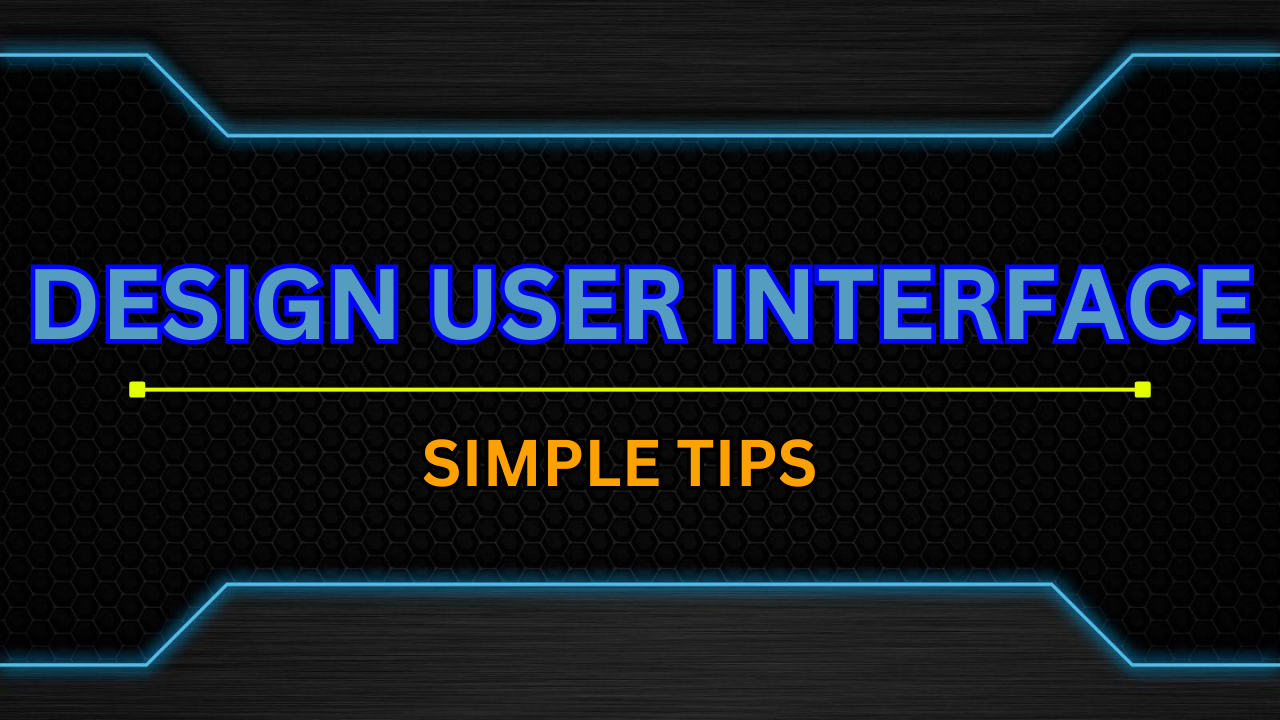When designing a user interface, simplicity is the key. Keep your design clean and organized. Use Intuitive icons and clear labels. Remember, less is more. Utilize whitespace to guide the user’s focus. Consistency in design elements improves user experience. Test your interface with real users for feedback. Creating an app or website does not have to be complicated. A well-designed UI helps users find what they need quickly and easily. This article will give some straightforward tips to help you design a UI that is simple, effective, and enjoyable to use.
1. Keep It Simple:
Simplicity is key. Don’t overload your UI with too many buttons or portions of data. A clean, simple design facilitates users to find what they want without feeling overwhelmed. Focus on the most crucial functions and hold the whole thing else to a minimum. An easy design makes it less complicated for users to navigate and use your app or internet site.
2. Be Consistent:
Consistency makes a huge difference. Use the same colors, fonts, and button styles throughout your design. If you use a certain color for buttons or headings, keep on with that preference across the entire UI. This facilitates users to understand how things work and makes your design look greater polished and professional.
3. Make Navigation Easy:
Good navigation is important. Make sure users can effortlessly find their thing around your app or website. Use clear labels for menus and buttons so users know exactly what everyone does. If your website or app has a lot of content, don’t forget to include to search bar to help users discover what they’re looking out quickly.
4. Choose Readable Fonts:
The fonts you choose have to be easy to read. Use fonts that might be clean and big enough to read with ease on any device. Avoid using too many one-of-a-kind fonts or patterns, as this can make your design appearance cluttered. Stick to 1 or 2 fonts and use them constantly to keep your UI looking clean and prepared.
5. Provide Feedback:
Feedback lets users understand their moves have been identified. For example, when a user clicks a button, show a visible change like converting the button color or showing a loading icon. These comments allow users to recognize what’s happening and what to expect next, making the experience smoother.
6. Design for All Devices:
Your app or website is probably used on different devices, like phones, tablets, and computers. Make sure your UI looks true and works properly on all of those devices. This is known as a responsive design. Test your design on diverse display sizes to ensure the entirety is easy to apply, regardless of how massive or small the screen is.
7. Use Clear Icons:
Icons can assist make your UI more intuitive. Choose icons that without a doubt display what they represent, such as a magnifying glass for search or a gear for settings. Make certain the icons are smooth to understand and widely identified. If needed, add labels or small descriptions to help users recognize what every icon does.
8. Think about Accessibility:
Accessibility ensures that everyone, including people with disabilities, can use your app or internet site. Follow guidelines to make your design accessible. For example, offer textual content descriptions for pics and pick shades that are smooth to look for those with shade blindness. Testing your design with accessibility tools and getting feedback from users with disabilities can assist make your UI more inclusive.
9. Test and Improve:
Testing is a critical part of the design. Get feedback from real users to see how they interact together with your UI. Use their feedback to make changes and fix any troubles. Regular testing and updating help you refine your design and ensure it meets users’ needs.
Conclusion:
Creating a personal interface doesn’t have to be hard. By keeping it simple, consistent, and easy to navigate, you can make a UI that people will enjoy using. Choose fonts that are easy to read, provide clear feedback, and make sure your design works well on all devices. Pay attention to accessibility, and keep testing and improving based on user feedback. With these simple tips, you can create an interface that helps users find what they need and have a great experience.


Leave a Reply